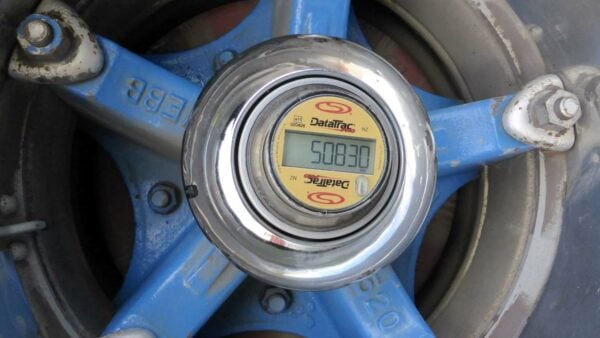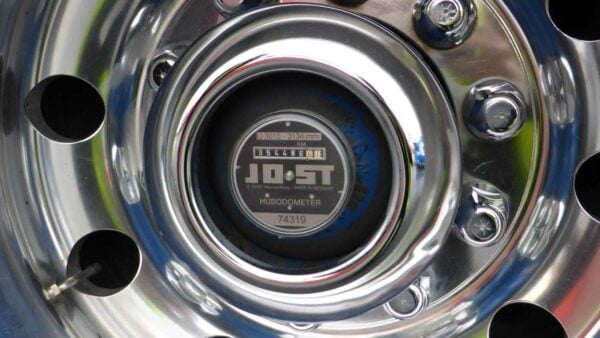A hubo or hubodometer measures the distance a vehicle has travelled by counting axle revolutions and displaying them on a counter.
In New Zealand, they must be calibrated to read in kilometres.

How are hubodometers used?
Accurate trailer mileage: trailers don’t have odometers like tractor units, so the only way to accurately measure how far they have travelled is to measure the number of rotations on one of the wheels. This is so that maintenance schedules and distance-based servicing can be adhered to
Distance-based pricing: some drivers are paid by the kilometre when delivering goods. The hubo is an accurate record of how far the trailer travelled.
RUC and other levies: if there are road user charges or other levies, the hubo enables an authorised person to check the mileage against what’s been paid for, or to enable them to bill based on distance travelled.
Rental rates: if you are renting a trailer based on the number of kilometres, then the hubo provides an agreed-upon record for calculating charges.
Calculating return on investment: as the hubo is accurate, the readings can be used to help calculate the ROI of the trailer based on expenses incurred.
How is a hubodometer constructed
Hubodometers used to be all mechanical, but many are now digital which is more difficult to tamper with.
They are built of durable metal as they have to endure all kinds of weather conditions from snow and ice to hot sun, with driving rain and constant wind. They have to be lubricated internally so that the internal part of the unit, which contains a weight to keep it in the same position, doesn’t rotate with the external part of the unit which is connected to the axle. Every time the external part rotates once, this is counted by the mechanism and/or electronics.
Mechanical hubos are never totally accurate because the number of revolutions is directly related to the diameter of the tyre. The more tread that is worn off, the more revolutions the axle makes per kilometre, but a mechanical hubo simply takes one figure and does not account for this. For example, if the tyre has 4mm wear, that’s around a 1% difference, i.e. the hubo is rotating 101 times in the same distance it would have rotated 100 times when the tyre was new. Of course, the hubo can be set to average this out, but it’s still inherently inaccurate.

One solution is a digital hubo which can make some kind of account for the reducing diameter of the tyres, although this is only as good as the person who programs it. The number of revolutions per kilometre can be set – this number can be provided by the tyre manufacturer.
An alternative to a hubo is a GPS-based system which then does not need to measure axle revolutions.
How often should a hubo be checked?
A driver should check the hubo when they do the pre-trip inspection. Hubos will also have a service interval.
What happens if the hubo is damaged or stops working?
If the hubo is found to be damaged, it must be replaced with a hubometer approved by NZTA and a change of hubometer form completed and sent to NZTA. You cannot fit a hubo to a vehicle if it has previously been fitted to another vehicle and that vehicle is still registered.
Where should the hubo be fitted?
A hubometer must not be fitted to a lift axle. It must always be on the left-hand side of the vehicle to allow it to be checked on the side of the road without putting the person checking it into the path of traffic.

